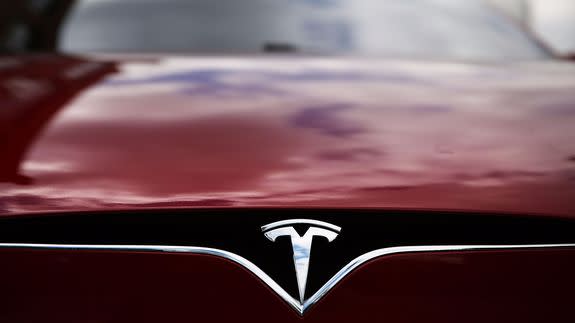How Elon Musk plans to make Tesla Motors a clean energy powerhouse

Elon Musk wants Tesla Motors to build more than just pricey electric cars.
The company’s billionaire co-founder and CEO says he plans to fashion Tesla into a clean energy powerhouse, one that enables homes and vehicles to run almost entirely on solar power and battery packs — not oil, coal or natural gas.
"By definition, we must at some point achieve a sustainable energy economy or we will run out of fossil fuels to burn and civilization will collapse," Musk wrote this week in a blog post detailing Tesla’s second "master plan."
SEE ALSO: Elon Musk sees a future where everyone can own a Tesla
"Given that we must get off fossil fuels anyway and that virtually all scientists agree that dramatically increasing atmospheric and oceanic carbon levels is insane, the faster we achieve sustainability, the better," he added.

Image: Getty Images for Vanity Fair
For Musk, the first step to transforming Tesla is acquiring SolarCity, the solar installation and financing firm that his cousins, Peter and Lyndon Rive, started in 2006.
Musk serves as the chairman of SolarCity.
SolarCity installed about a third of all the solar panels that went on U.S. household rooftops last year. It also recently started selling batteries to store the extra sun-powered electricity produced during the day to use at night or as backup power.
Tesla’s board first proposed to buy the California solar company last month in a deal valued at $2.8 billion.
The main idea of the acquisition is to create “end-to-end clean energy”: solar panels that charge batteries, which in turn charge electric cars like Tesla’s Model S or Model X.
In many states, battery-powered cars still depend on electricity that comes from coal or natural gas power plants, meaning the vehicles aren’t entirely emissions-free. Musk wants to nix fossil fuels entirely from the equation.
“The time has come to bring them together,” he said Wednesday of Tesla and SolarCity. (Musk is the top shareholder in both companies and is barred from voting on the deal.)
Energy experts said that combining Tesla and SolarCity could help revolutionize how Americans use and create energy in coming decades by making renewable power more mainstream and affordable.
Tesla’s envisioned model could “maximize the transition away from fossil fuels,” Credit Suisse analysts said in a July 1 research note provided by email.
“Low-cost storage, electric vehicles and distributed solar are a natural fit.”
For all the logic behind it, the deal may not be as much of a win/win as it seems upon first glance.
In fact, the timing of Tesla’s plan couldn’t be worse, analysts said.
Burning through cash
Tesla and SolarCity are both years away from profitability, and both are quickly burning through cash.
Tesla has a negative free cash flow of more than $2.2 billion, meaning the automaker is plowing far more money into scaling its operations than it is earning by selling cars. SolarCity’s negative free cash flow was similar last year, at negative $2.6 billion.
Tesla’s investors say they’re worried that acquiring SolarCity could undermine the automaker’s own goals for explosive growth and profitability.
Tesla is also facing a tight timeline to start producing its Model 3 sedan by late 2017 and rolling out higher volumes in 2018.
“If this [SolarCity] proposal had been made three years from now — after the Model 3 rolled off the production line, and Tesla was in good financial health — that acquisition could make sense,” Salim Morsy, an advanced transport analyst with Bloomberg New Energy Finance in New York, said in an interview.
“The timing of the announcement is not particularly appealing,” he added.
The two companies’ financial woes could also weaken Tesla’s ability to build a truly breakthrough clean energy system, at least in the short run, said Hugh Bromley, a Bloomberg New Energy Finance analyst.
For that to happen, Tesla would need to move beyond simply selling solar panels, batteries and electric cars to U.S. homeowners and companies.

Image: Getty Images
It would need to design software and data systems that take those thousands of individual projects and link them remotely to form a kind of “virtual” power plant, replacing the need for huge coal and natural gas power plants.
That will require substantial spending and an overhaul of U.S. utility regulations that currently favor the 20th century energy grid.
“... They’ve got no cash to get there, and they have to fight against 150 years of utility regulations,” Bromley told Mashable.
Tesla's board has proposed to pay between $26.50 and $28.50 a share to acquire SolarCity. The solar firm's board of directors and advisers are currently reviewing the offer.
